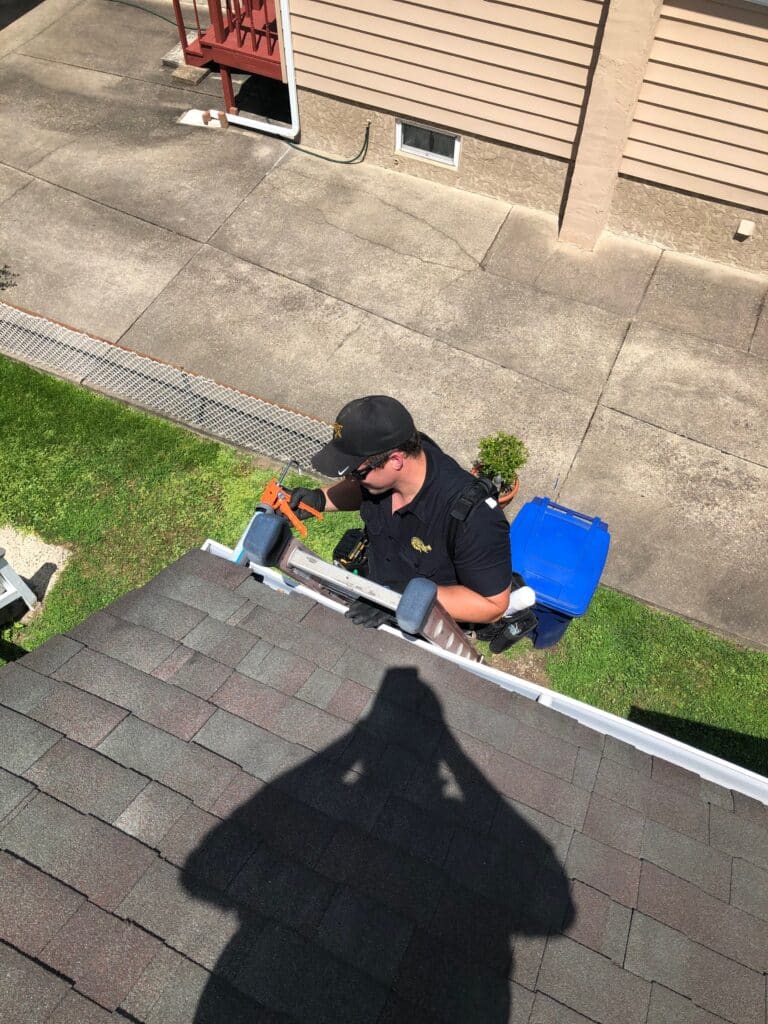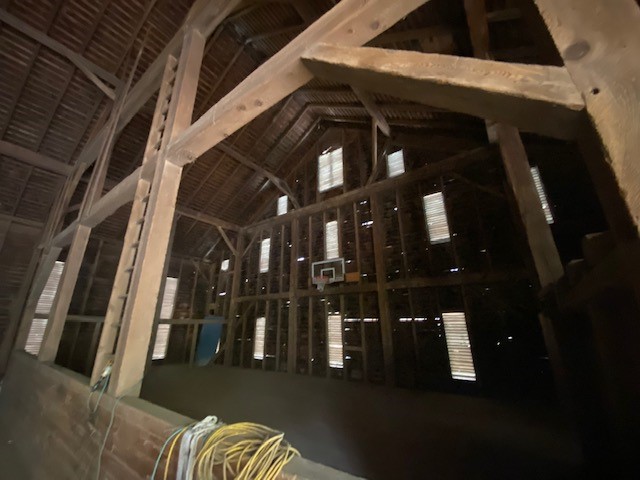Birmingham is called the Magic City for its rapid growth in the early days. The wildlife population has been rapidly growing, too.
Currently, Alabama is home to 22 species of rodents, 16 species of bats, 11 species of carnivores, six species of insectivores, four species of rabbits, one opossum, and one armadillo. Non-native wildlife includes the black rat, Norway rat, house mouse, nutria (coypu), fallow deer, and feral swine.
Wildlife in Birmingham, AL
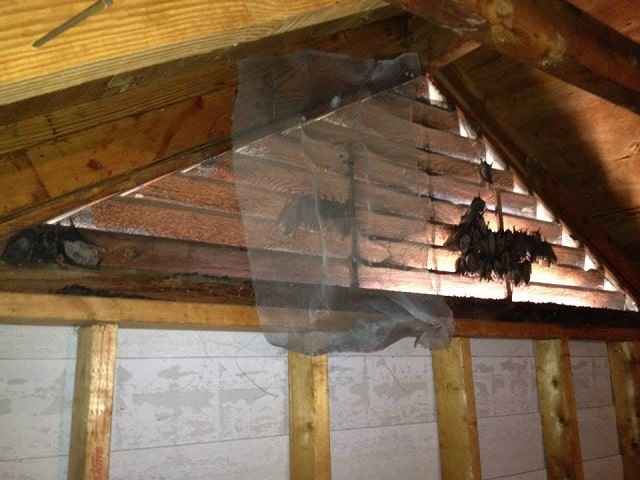
As the Birmingham area continues to grow and develop, we are increasingly experiencing interactions with wildlife that have no choice but to live alongside us. We see them in our neighborhoods, our backyards, and even in our homes. Many wildlife species become nuisances due to the damage they cause to our houses and property.
Spring Pests
- Raccoons
- Squirrels
- Rats
- Birds
- Moles
- Snakes
- Opossums
- Skunks
Summer Pests
- Bats
- Snakes
- Armadillos
- Raccoons
- Squirrels
- Rats
- Mice
- Stinging Insects
Fall Pests
- Raccoons
- Squirrels
- Bats
- Rats
- Mice
- Birds
Winter Pests
- Rats
- Mice
- Birds
- Squirrels
- Raccoons
- Skunks
DIY Wildlife Removal & Prevention
As a homeowner, it’s important to remain vigilant for signs of nuisance wildlife and make sure your property is not attracting animals. Check for weaknesses such as loose roof shingles, gaps in foundations, and uncovered vents. In addition, keep your yard free of debris where animals can take shelter, ensure trash is tightly closed, and bring pet food inside. These are good DIY strategies. Critter Control is a beneficial partner in not only removing animals once they invade but also proactively preventing them by scheduling an annual inspection and employing recommended exclusion and deterrence techniques.
Getting rid of nuisance wildlife is necessary, and it must be done the right way. Critter Control is here for you every step of the way in the wildlife removal process. From inspection to removal—and even exclusion and repair—we have the services you need to get rid of raccoons, rodents, and other nuisances fast.
Photos from the Field
Animal Control in Crawlspace
Critters like raccoons, opossums, and skunks could access this homeowner’s crawlspace and create dens under the house. We replaced the door to keep animals out.
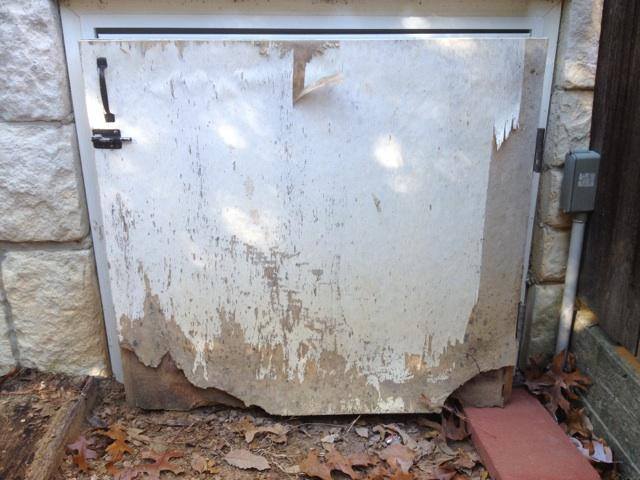
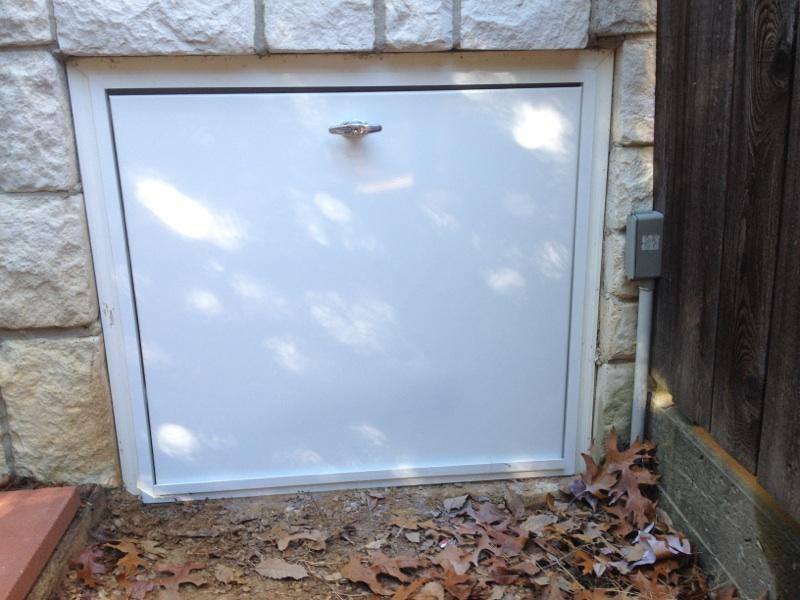
Watch as he saves a raccoon that tumbled into his pool!
The disaster was narrowly adverted for this raccoon family. While they were strolling through a backyard, one of the kits tumbled into the chilly pool! The rest of the family scurried to get him out of the cold water.
Fortunately, the homeowner saw the event and came to the rescue. With pool net in hand, the raccoon was scooped out of the pool! Raccoons usually love pools in Houston, but the cold water made this situation dicey.
Why Raccoons Love Pools in Houston
While it’s common lore that raccoons like to wash their food in water before they eat it, scientists have now discovered that they use water for a different purpose. Water makes the pads of a raccoon’s paws more sensitive to what they are holding. The process is called “dousing.” When a raccoon is dousing, it helps them gather information about the food’s texture and ingredients; it helps them distinguish between a tasty morsel and something best set aside.
Raccoon forepaws are covered in tiny spikes that act as sensors. Because more than 60% of a raccoon’s cerebral cortex is dedicated to sensory perception, their hands are incredibly informative tools. Since raccoons are nocturnal, this is especially useful to them as it allows them to “see” their food through this heightened sense of touch.
Raccoon Poop in Pools
If a raccoon has decided that your pool is safe, they will return regularly. In addition to using the pool to douse, they will poop there too. Raccoons pooping in a pool is not unusual, and you will most likely find their poop in the shallow end, on the steps.
Raccoon poop looks similar to dog poop. It is dark, has broken ends, and will most likely contain seeds and berries, as this is much of what raccoons eat.
Health Risks of Raccoon Poop in Pools
If you find raccoon poop in or around your pool, the pool must be cleaned immediately and thoroughly. Their feces often contain the eggs of a worm called Baylisascaris procyonis, which can infect humans, particularly children, causing severe neurological illness. These eggs can be swallowed while swimming in an infected pool. Unfortunately, while the chlorine in your pool will kill much of what can harm you, it does not kill these eggs.
Animals choose to get under the house primarily for the shelter it can provide. Most animals you’ll find under the house are likely making their way there to create a burrow or nest. The dark space offers shelter from the elements, making it the perfect spot to call home. Beyond simple shelter, the space under your house is close to food sources that come with human presence.
Opossum and Skunk Hole Under House
Skunks and opossums can get through this hole in the foamboard under the house. They’re nocturnal, so it’s unlikely you’ll see either animal, but there is evidence. Both critters usually stay in a den location temporarily and move out on their own. You shouldn’t ignore the problem! The entry hole still exists and will be used by other pests. This one hole was used by a skunk and an opossum at different times. Animals like raccoons and rodents can easily fit through this hole.
Opossum in Crawlspace
Opossums usually creep into crawl spaces in search of shelter and food, using gaps and openings in the foundation or vents to gain access. While they tend to be less destructive than raccoons, opossums in crawl spaces can still create sizeable messes with their droppings and may carry parasites like fleas and ticks.
Skunks in Crawlspace
Skunks are known to burrow under foundations to access crawl spaces, especially when winter brings cool temperatures. Attracted by the warmth and potential food sources, their presence is often painfully obvious thanks to their distinctive odor. Beyond their smell, skunks in crawl spaces can damage your home with digging and may carry diseases such as leptospirosis, which can be transmitted to humans and pets.
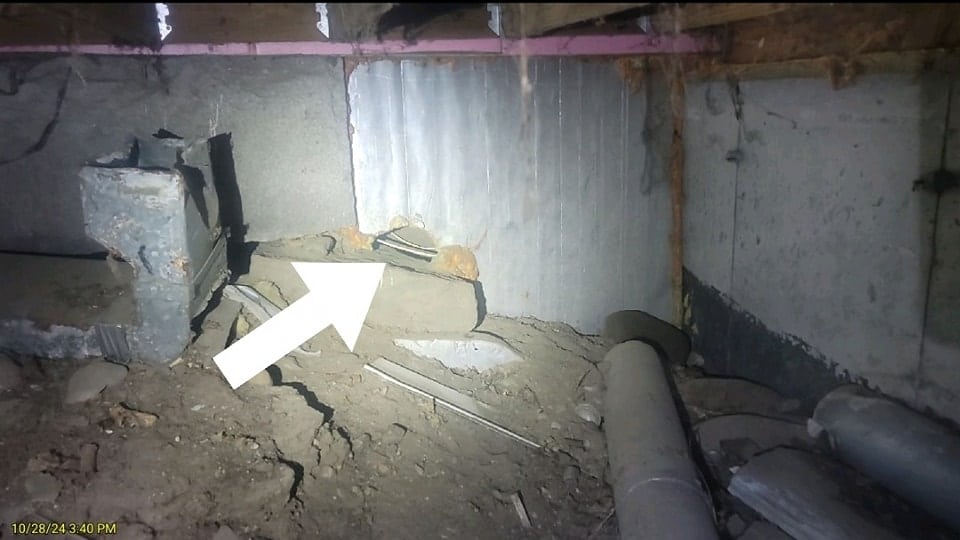
Animal Control Under the House
Technicians Fox & Jake removed the foam board (that had a hole) and installed cement board, more rocks, and some mortar in this crawlspace.

Homeowners can experience nuisance wildlife problems year-round in Houston. I also notice a significant uptick in raccoon and squirrel instruction during these upcoming months as animals seek winter nesting protected from the elements of nature and predators as this is breeding season. For the larger animals, I typically see females being the culprits to establish their breeding dens. As they exit the properties to search for food and water they mark their territory to attract a mate for breeding so where I typically find one, more are soon to follow!
New Home Construction and Nuisance Wildlife
Houston home construction is ripe for animal intrusion regardless of new build or mature homes. This, coupled with environmental conditions along the Texas Gulf Coast causes homes to “open up” more rapidly than in other markets.
Residential structural engineering’s fundamental purposes are to:
- Keep warm in the winter
- Keep us cool during the summer
- Keep us dry
- Comply with “code”.
The building code doesn’t prescribe provisions for preventing wildlife intrusions.
Houston homes have certain elements found on our homes like weep holes because of the warm, humid climate. For example, weep holes are gaps on brick homes near the foundation that allow moisture to exhaust from gaps behind the bricks and between the weather barriers of homes.
These can’t be screened otherwise it will impede the purpose of this ventilation element. We can insert copper mesh, breathable wafer inserts, or a 1/4 inch galvanized hardware cloth to allow the home to breathe but prevent critters such as rats, mice, or snakes from entering. Below is a snakeskin shed at my home.
The Texas Gulf Coast Climate and Wildlife
We also know homes expand, contract, shift, and settle. For the most part, our geology is relatively stable despite being on what is pretty much a swamp but weather expansion and contraction, contrary to popular belief don’t happen over years necessarily but can occur in weeks.
For example, it’s really hot and humid down here, in most of Texas for that matter. In 2022 in Houston, there were 52 days over 100 degrees in the shade. This causes our roofs to heat well in excess of 150 degrees + which can melt boots. Along the coast, we often get steady winds from the gulf which cause pop-up thunderstorms. During the heat of the day when these storms pop up and drop 60-degree rain on such surfaces, expansion/co-reaction happens rapidly. Nowadays in new construction hardy plank is a preferred material of choice which is designed exactly to expand and contract. I’ve seen this process happen in my homes in a season, causing homes to open up, and guess who can come knocking? Rodents! Open pathway to shelter!
Wildlife Behavior during Winter
Along the Texas Gulf Coast, it doesn’t get cold enough nor cold long enough to induce hibernation. With that said, with the change of summer into fall, the cold fronts do trigger the mammalian instinct to see warmth as winter approaches. Most of the homes I see personally during winter have rodent activity.
Natural Predators in Urban Environments
As in any large metropolitan, there is more of an absence of natural predators that control nuisance wildlife populations like rats and squirrels. This often allows populations to go unchecked causing significant issues in large geographical areas.
With this absence of natural predators in addition to homes providing year around protection from the elements of nature, predators and landscaping/irrigation systems/pools providing a constant and sustainable food/water source Metro Houston area has been experiencing a defined increase in wildlife issues in our homes and around our neighborhoods.
About the author
Roger Maul serves as the southwest region sales manager for Critter Control. He has lived and worked in Houston for over twenty years. He lives in The Woodlands with his wife and two daughters.
Groundhog Day celebrated annually on February 2nd, is a fascinating blend of folklore, history, and community spirit. Known for its charming traditions and cultural significance, Groundhog Day has evolved from its European roots into a beloved event in the United States and Canada.
The holiday is based on folklore that a groundhog emerging from its burrow can predict the weather for the coming weeks:
- If the groundhog sees its shadow (meaning the day is sunny), it retreats into its burrow, indicating six more weeks of winter.
- If the groundhog does not see its shadow (cloudy day), it stays outside, suggesting an early spring.
Groundhog Day Prognostications across the Country
There are weather-predicting groundhogs and critters across the country. According to NOAA, the most accurate groundhogs are Staten Island Chuck in New York and General Beauregard Lee in Georgia. Punxsutawney Phil, while the most famous prognosticator, is not the most accurate. He’s been predicting the water from his burrow on Gobbler’s Knob since 1887!
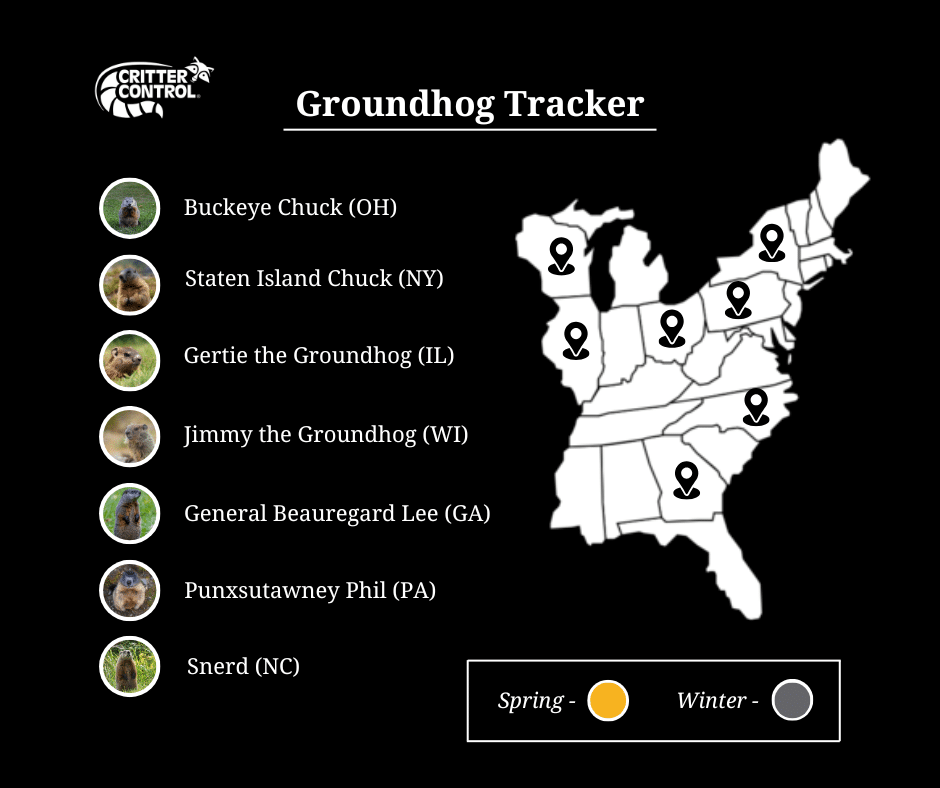
Follow on Instagram for live updates
Comparing Groundhog Prognostications to NOAA
| Prognosticator | 2024 | 2023 | 2022 | 2021 | 2020 | 2019 |
|---|---|---|---|---|---|---|
| NOAA | Early Spring | Early Spring | Early Spring | Early Spring | Longer Winter | Longer Winter |
| Buckeye Chuck | Early Spring | Longer Winter | Early Spring | Early Spring | Early Spring | Early Spring |
| Staten Island Chuck | Early Spring | Early Spring | Early Spring | Early Spring | Early Spring | Early Spring |
| Gertie the Groundhog | Early Spring | Longer Winter | Early Spring | Longer Winter | Longer Winter | Early Spring |
| Jimmy the Groundhog | Early Spring | Longer Winter | Early Spring | Early Spring | Longer Winter | Early Spring |
| General Beauregard Lee | Early Spring | Early Spring | Early Spring | Early Spring | Longer Winter | Longer Winter |
| Punxsutawney Phil | Early Spring | Longer Winter | Longer Winter | Longer Winter | Early Spring | Early Spring |
| Snerd | Early Spring | Longer Winter | Longer Winter | Longer Winter | Longer Winter | Early Spring |
Can I Trust the Groundhog in my Backyard?
If you live in the Eastern or Central part of the United States, you might witness a groundhog appear in your yard. Groundhogs are true hibernators, and they just start to wake up in February. Groundhogs typically begin hibernation in late fall (around October or November) and remain in their burrows until early spring (February or March), depending on the climate.
We do not recommend checking a groundhog in your yard if it sees its shadow. Generally, they are not aggressive but they can be dangerous if threatened. If you do see a groundhog in your yard, call Critter Control. Their extensive burrows can damage your yard and undermine buildings.
The History of Groundhog Day
The origins of Groundhog Day date back to ancient European traditions, specifically the German custom of Candlemas Day. Held on February 2nd, Candlemas Day involved clergy blessing candles and distributing them to ward off the darkness of winter. It was believed that if the weather was fair on Candlemas, the latter half of winter would be harsh and cold. German settlers brought this tradition to America, adapting it to their new environment by replacing the badger with the groundhog, a creature commonly found in Pennsylvania.
Groundhog Day officially began in 1887 in Punxsutawney, Pennsylvania, thanks to a local newspaper editor who promoted the event. This led to establishing Punxsutawney Phil, the now-iconic groundhog, as the weather predictor. Over the years, the celebration grew from a local event to a national spectacle, attracting thousands of visitors eager to see Phil’s prediction.
Mice are one of the most common pests homeowners face in the United States. Mice can be a problem for any type of house regardless of age or condition because they can squeeze through a hole the size of a dime. When people first notice signs of a mouse infestation, they usually run to the hardware store to get traps. To help homeowners, we asked the division service manager Jason Leinneweber his advice on picking the best mouse trap.
What is most important to consider when buying a mouse trap?
The most important thing to consider is effectiveness. Some traps may be cheaper but could be less effective or considered less humane. On the other hand, some traps, like humane electrical traps, are more expensive but very effective. Traps can truly be a “you get what you pay for” deal. The exception to this rule may be the old-fashioned Victor-style traps (the ones with the wooden base). They only run a few dollars and there is a reason they have been around for 100 years, my only advice with this style of trap is to keep your fingers out of the way.
Homeowners need to assess their particular mouse infestation situation to discern what sort of trap is going to work best for them, based on how many mice they think are in the house, and their skill level of trapping along with the time commitment needed to solve the issue. It should be noted that traps are typically most effective if there are only one or two mice in the home; if you’re dealing with a larger quantity of mice, it is best to employ the services of a wildlife removal professional, who can handle your home’s mouse problem in a properly customized fashion.
What mouse trap type is most humane?
If you’re interested in a reusable trap that humanely handles your mouse problem, cage traps are most effective. These traps allow mice to enter from one end of the trap and then cannot exit, at which point the homeowner can release the animals outside, unharmed. The trap can then be put back into use right away, to collect any other mice still living in the home.
Watch a cage trap catch a rodent.
What should you consider when choosing a mouse trap if you also need to consider child and pet safety at home?
Although snap traps may be the most well-known and most common mouse traps for household use, their snapping component could be dangerous for pets and small children around the house. Pets may be drawn to the food used to bait the trap, while babies and toddlers could confuse it as a toy left on the ground and try to touch it, activating the snapping function and getting hurt.
If you have young children or pets, you may want to stick with cage traps that pose less of a physical threat to them.
What’s the best bait to use in a mouse trap?
While cheese may be the most famous bait for mouse traps, homeowners should know that mice prefer sweet foods. With that in mind, if you’re using a food-baited snap trap, your best bet for enticing mice to the trap is to bait it with peanut butter or some other light, sweet treat. Pay attention to what the mice are already eating if they have invaded the pantry. If you find a hole chewed in a box of cereal, use that as your bait.
How long does it usually take for a mouse trap to work?
Many mice may be averse to taking unnecessary risks, so even if you put a trap right in an area or path that they frequent within your home, they may remain skeptical of it for some time and choose to avoid it. They typically won’t approach it until they’re certain it doesn’t pose an immediate threat to them, which can take days or even weeks.
In some instances, that wait may not bother a homeowner, but each day that the mouse problem is not handled, is another day of your home and food potentially being contaminated by them. While they’re scurrying around, they may also chew on furniture and other fixtures in the house, as well as electrical wires, which could cause a fire. Not only that, but mice reproduce and multiply very quickly, so every passing day where the problem is not rectified is another day closer to the problem worsening.
If you feel the traps are not getting the job done in an economical amount of time, you ought to enlist the help of a professional wildlife removal service.

Jason Leinneweber started his career as a wildlife biologist in 2009. He was instrumental in growing the region first as a technician, then District Manager in Dallas-Fort Worth. He spent five years as the district manager before being promoted to region manager. Jason’s experience in excellent service earned him another promotion to Division Service Manager in 2021.
You see woodchuck (groundhog) heads popping up in fields, and then quickly, they disappear. You may even see them hurrying across the street from time to time, avoiding traffic. Groundhogs are crepuscular. They are most active in the mornings late afternoons and evenings. They’ll retreat to their burrows during the hottest parts of the day.
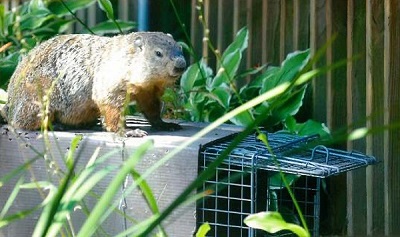
Woodchucks are attracted to food sources in your yard and garden. They primarily feed on grasses, clover, dandelions, and other native plants. Gardens are particularly enticing to woodchucks as they enjoy fruits and vegetables such as lettuce, beans, peas, and berries, and they will even nibble on ornamental plants and flowers. Compost piles and fallen fruits beneath trees also appeal to these animals, providing easy access to food in residential areas.
When you see them, they are out and about, searching for food to take back to their underground home. Woodchucks prefer to make a home under a shed, barn, or even your house. They dig multiple tunnels, giving them access to their underground den at several locations.
Damage Caused by Woodchucks
The problem is that the tunnels destroy the foundation of your house, shed, or other structure. Groundhogs can move hundreds of pounds of dirt when they are burrowing. Depending on your type of foundation, your home could be sitting on uneven ground. You will know it soon enough because your foundation will shift and cracks will form. Eventually, your house may fall.
Groundhogs also wreak havoc on your garden. They create large holes in fields, causing severe damage to tractors and farm equipment. If horses or livestock step in a groundhog hole, it can be a costly vet bill.
What are some humane ways to get rid of woodchucks?
Some people claim Epsom salt on your plants can deter a woodchuck from entering your garden, but I haven’t heard of that work.
Taste repellents like mint and capsaicin do work. Taste repellents like capsaicin do work. You can spray the repellent on leaves but don’t spray on food crops. Apply every 30-60 days depending on rain. They are not 100% effective. An important caveat for repellents. If an animal really wants to be somewhere, it will get there. If the animal has young, maternity instinct will override a repellent.
If that doesn’t work, you might be able to live trap and relocate groundhogs. You need to check local and state laws before you attempt to relocate any wildlife.
Fences make great neighbors. Trapping a groundhog can be labor intensive. A fence around your garden can keep groundhogs from eating your vegetables and flowers.
Be aware of the birth season. In New Hampshire, groundhogs breed in Late March and April after hibernating. They give birth in April, and the young can leave the burrow in June. So if you trap and relocate a lactating mother in May, the young will be abandoned in the burrow.
In the Northeast, we find a variety of different animals frequenting homes. From tiny house mice to coyotes, wildlife utilizes homes for a variety of reasons including shelter and food. The most common species we find as unwanted roommates are mice, rats, squirrels, raccoons, birds, bats, and snakes.
Most critters want to stay away from any human activity. They will utilize areas like attic spaces, wall voids, subfloors, and basements/crawl spaces to seek shelter and escape the elements. On occasion, a critter may find its way inside the living area but will probably spend its time trying to escape.
When Critters are Active in the Northeast United States
Raccoons, skunks, and opossums are all nocturnal. You will rarely encounter these animals but that doesn’t mean they aren’t living around your property! They tend to sleep during the day and are most active in the middle of the night. Squirrels on the other hand are diurnal, or active during the day. They are very quick and excellent climbers and therefore do not need to hide from predators by feeding in the dark.
Most critters want to stay away from any human activity. They will utilize areas like attic spaces, wall voids, subfloors, and basements/crawl spaces to seek shelter and escape the elements. On occasion, a critter may find its way inside the living area but will probably spend it’s time trying to escape.
Skunks in the Yard
Skunks are impressive diggers commonly found denning under porches, decks, garages, and even the foundation of the home. The best solution to get rid of them is to perform preventative exclusion. We recommend installing underground fencing around the permitter of these structures. A licensed nuisance wildlife control operator should remove the current inhabitants before any exclusion so as not to enclose any wildlife under the structure. Can you imagine an angry, stuck skunk under your porch?
Skunks can spray up to 10 feet with an accuracy of a couple of inches, and the smell can be detected for over a mile! They are also immune to snake venoms and are known to sometimes kill and eat venomous snakes.
Raccoon Pests
Raccoons have very high IQ levels and have been known to learn behaviors from humans as well as demonstrate critical thinking skills like opening traps or doors. Raccoons are extremely skillful and resourceful, can adapt to live almost anywhere and absolutely thrive in urban environments.
It’s no secret that raccoons, aka “trash pandas” love garbage! The best solution is to use garbage cans with secure lids and keep any dumpsters closed and locked. A motion sensor spotlight can sometimes help deter them during the night.
Raccoons are adept climbers capable of scaling most homes and businesses. Raccoons have dexterous hands and powerful jaws. Once on the roof, they often break into and enter attics. From there, they often have free roam of the ceiling and wall voids.
Bats in the Attic
Bats can be hazardous animals to have in your attic, for multiple reasons. Bats often carry rabies and if scratched or bitten by a bat, you will need a rabies vaccine as soon as possible. Their bat guano is also hazardous and can cause respiratory problems including histoplasmosis or scarring of the lungs. If bats are discovered in your attic, it is best to stay out of the attic, make sure the attic door is shut tight, and call professionals. Bats are very beneficial to the environment and need to be treated with care, while also protecting those who live in the home.
Snakes in the House
To many homeowners, there’s not much scarier than the idea of a snake getting into their house. Fortunately, there are plenty of things to be done to help prevent them in the first place.
- Firstly, get rid of any conducive habitat close to the home. Keep shrubs and bushes trimmed 2-3 feet away from the foundation and move any log piles or debris away from the home.
- Second, make sure any gaps along the foundation and roofline are properly sealed or covered.
- Third, get rid of their food source! Snakes are our natural pest control eating mice, rats, and a variety of insects, however, to prevent the snakes from in turn becoming the pest, we recommend having your home inspected for rodents and bugs by pest control pros.
When Should Homeowners Call Critter Control
Homeowners should call Critter Control at the first sign of a critter problem. People usually notice strange sounds, bad smells, droppings, or physical damage. The longer an animal infestation is ignored, the more entrenched these critters can get. The longer pests are in the house, the more damage they cause.

Rory Smart currently leads the Northeast region which includes Virginia, Maryland, DC, Connecticut, Rhode Island, New York, Massachusetts, Delaware, and New Jersey. He has experience as a wildlife control specialist helping homeowners with nuisance wildlife problems, division recruiter, and region service manager.
Carving pumpkins is one of the most popular activities in October. But jack o’lanterns aren’t just a symbol for Halloween, they also are critter magnets. We asked Meg Pearson, wildlife training manager, for her insights on what pests are attracted to pumpkins and tips on how to stop squirrels and critters from eating your pumpkin.
Why are pests attracted to jack o’lanterns?
Though your annual jack o’lantern is a fun, temporary piece of autumnal decor, it can essentially act as a free meal, served on a platter for the local critter community, most of which is constantly on the prowl for their next meals. The fact that the pumpkin is carved up only makes it easier for local wildlife to access its tasty insides, which many animals will happily chow down on, regardless of whether it’s fresh or rotting.
What serves as a festive decoration for us, is seen as an outdoor buffet to the local wildlife population.
Which pests are attracted to jack o’lanterns?
Many smaller animals, like mice, rats, and squirrels, will be interested in eating your jack-o-lantern, but it may also attract larger animals, including raccoons, opossums, deer, and more.
What are the best ways to deter them from gnawing on them?
The best way to keep local animals from approaching your home and eating your jack o’lantern is to keep proper care of your lawn: keep it mowed and be sure to regularly rake your leaves, as many smaller animals thrive in areas with unkempt lawns.
You may also want to keep your jack o’lantern on some sort of elevated surface that may be difficult for a mouse, rat, or squirrel to access, possibly deterring them from trying after a few attempts.
You must keep animals from approaching your house, in search of food, because after they finish scarfing down your jack o’lantern, they may decide to see if they can enter your house in search of even more food, and then you’ll have a much more serious critter problem on your hands. Be sure to seal any cracks or gaps in your home’s foundation this fall, as many animals will be looking for a warm place to live through the winter, especially if it serves as a consistent food source.
Other seasonally appropriate preventative measures to stop critters from entering your home?
One of the best things you can do to keep nuisance wildlife away from your home and yard is to keep a clean, sealed space. For your yard, this means raking leaves and trimming branches and bushes. This prevents the animals from burrowing and climbing. You’ll also want to seal up any gaps in or around your home such as areas under decks, any sort of visible gaps in the foundation or outside of your home. Critters seek shelter and warmth, and openings in your house provide that for them. Finally, keeping trash tightly sealed and bringing in pets’ water and food dishes will deter critters from your property.

By Roger Maul, Region Sales Manager for Critter Control
As Houston grows and expands, so does the risk of squirrel infestations. While they may seem cute and harmless, squirrels are responsible for significant damage to homes and infrastructure. As a professional in wildlife management, I’ve seen firsthand how these furry creatures can wreak havoc, especially in urban settings like ours. Let me walk you through some key points to remember when it comes to squirrel infestations, particularly in Houston.
The Impact of Land Development on Local Wildlife
Houston’s land development directly contributes to the displacement of native species, including squirrels. When one species is displaced, the entire ecosystem feels the effects. Squirrels, like all animals, are driven by their need for three things: food, water, and shelter. As we build new homes, offices, and infrastructure, we’re inadvertently providing these animals with more shelter, driving them into attics, vents, and even weep holes in our homes.
Squirrel Behavior and Why They Love Your Home
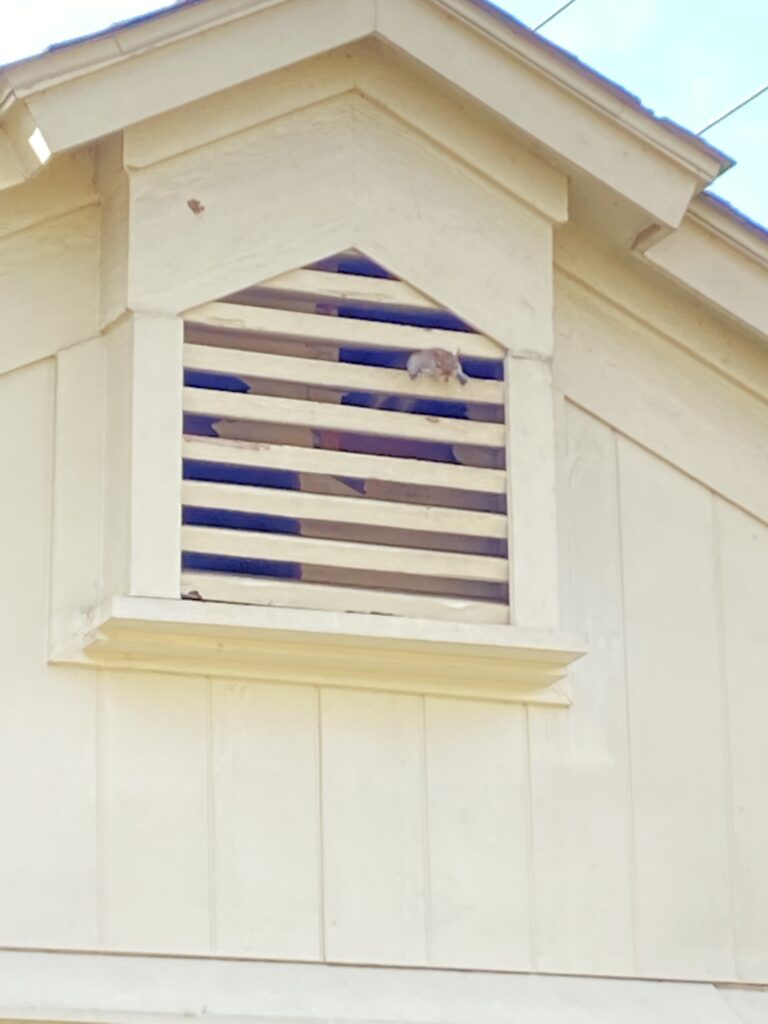
Squirrels are highly adaptive animals. They can jump 5 to 6 feet vertically and 8 feet horizontally, which means even if you think the tree branches are far enough from your house, they can easily find their way in. Their natural ability to chew, particularly to file down their teeth, poses a serious threat to homeowners. Texas homes commonly use PVC and PEX piping, both of which squirrels can chew through, causing costly water damage. In addition, they can gnaw on wires, leading to electrical issues or even fires.
One of the most common entry points for squirrels is the roof, especially through vents created for attic air exhaust. Weep holes, which allow ventilation in homes, are another weak spot that squirrels exploit. In Houston, with its hot and humid climate, homes are particularly vulnerable to these types of entry points.
Recognizing the Signs of a Squirrel Infestation
Most people don’t realize they have a squirrel problem until it’s too late. Because squirrels are diurnal, they’re active during the day and often spend time outside, returning to your attic at night. This sneaky behavior means you might not notice them until you hear scratching or gnawing sounds at sunset, or worse—discover plumbing issues due to chewed pipes. Other telltale signs include fresh wood exposed under paint (from chewing) or tic-tac-shaped droppings scattered around your attic.
One particularly deceptive aspect of a squirrel infestation is their ability to create paths through attic insulation without leaving obvious signs. Squirrels also leave small piles of debris where they chew and build nests.
Year-Round Problem in Houston
Unlike in colder regions, squirrels in Houston don’t hibernate. The warmer climate means that squirrels breed year-round, doubling their birthing season and multiplying their numbers at an alarming rate. This is especially true right now as land development in Houston is displacing more wildlife than ever.
Houston is home to several species of squirrels, including the gray squirrel, ground squirrel, and fox squirrel. These species are now thriving in our urban environments, creating a year-round headache for homeowners.
Squirrel Prevention: It’s Not About Chemicals or Traps
If you think the solution to a squirrel infestation is a quick spray or a trap, think again. The real preventative measures involve physically blocking off potential entry points. Sealing small holes, gaps in roofing, and weep holes are crucial steps to keep squirrels out. However, it’s important to note that common sealants like spray foam are no match for squirrels’ powerful teeth—they can easily chew right through wood.
The best solution is a professional wildlife inspection to identify potential entry points and secure your home. We at Critter Control focus on proactive strategies like sealing gaps and reinforcing vulnerable areas to prevent squirrels from entering your home in the first place.
A Delicate Balance: Protecting Wildlife and Your Home
One final point to remember: in Texas, squirrels are considered a state resource, which means they are protected by law. While they can be incredibly destructive, shooting or harming squirrels is illegal. Instead, if you suspect a squirrel infestation, it’s best to call in a professional wildlife service to handle the problem humanely and legally.
Squirrel Removal in Houston
As Houston continues to expand, the issue of squirrel infestations will only grow. It’s important to be aware of the signs and take preventative steps to protect your home. Remember, squirrels aren’t just pests; they’re part of our ecosystem, and managing them responsibly is key to preserving the delicate balance between urban development and native wildlife.
Stay vigilant, and if you hear that telltale scratching in your attic, don’t wait. Contact Critter Control to assess and address any rodent or wildlife issues before they lead to costly damage.
About the Author

Roger has over 20 years of experience in sales, management, and business development. Roger has over five years helping customers identify nuisance wildlife problems throughout Texas, Oklahoma, Louisana, New Mexico, and Colorado. As Region Sales Manager, he recruits, trains, and mentors Critter Control’s wildlife sales consultants throughout the South Central region.
Rodents are the most commonly encountered mammal in Texas. Some of the most common rodents you’ll find in your Houston area home are:
- Norway Rats
- Roof Rats
- House Mice
- Eastern Gray Squirrels
The deer mouse, White Footed Mouse and nutria are other rodents in Houston area that can be a nuisance but aren’t as prevalent.
Homeowners in the Houston area tend to notice rodent feces or strange sounds in their walls and attics first. Rodent problems extend beyond those nuisances. Feces can transmit diseases. Rodents gnawing on electrical wires can increase the risk of fires. The pests introduce parasites like fleas into your house.
Critter Control in Houston specializes in rodent removal and control. Rodent removal begins with a thorough inspection to determine how severe the problem is. The more established rodents are, the more involved the removal process will be. After inspecting, our wildlife specialist will build a custom solution to trap, remove, and seal all entry points.
Rodent Damage in Houston
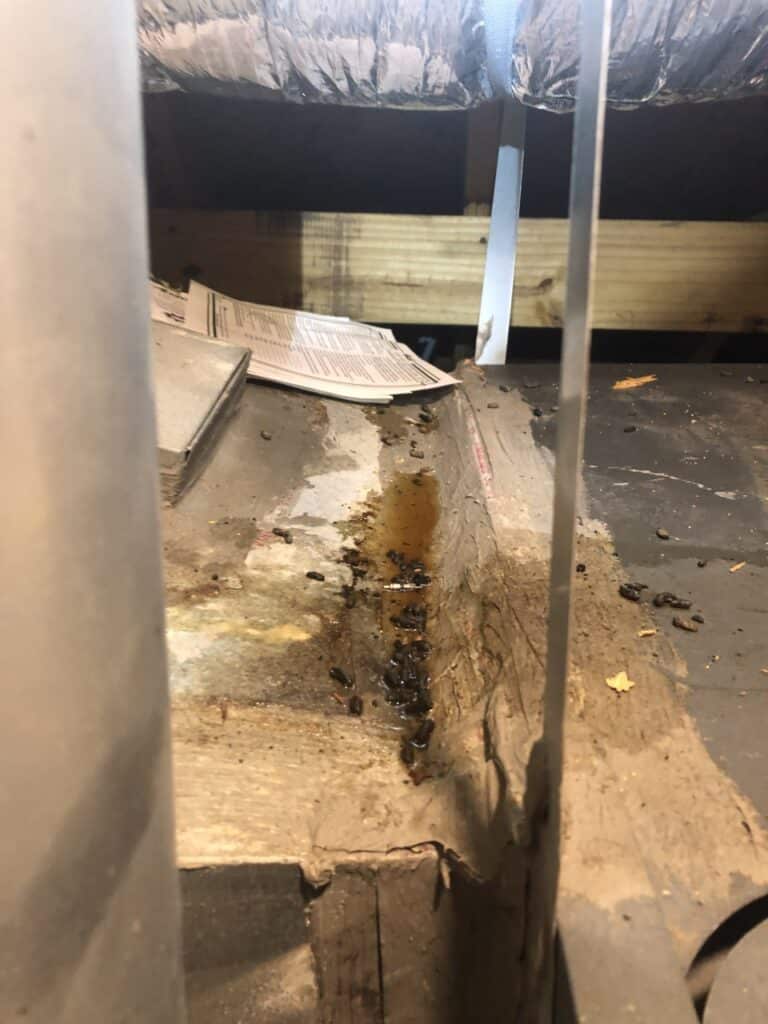
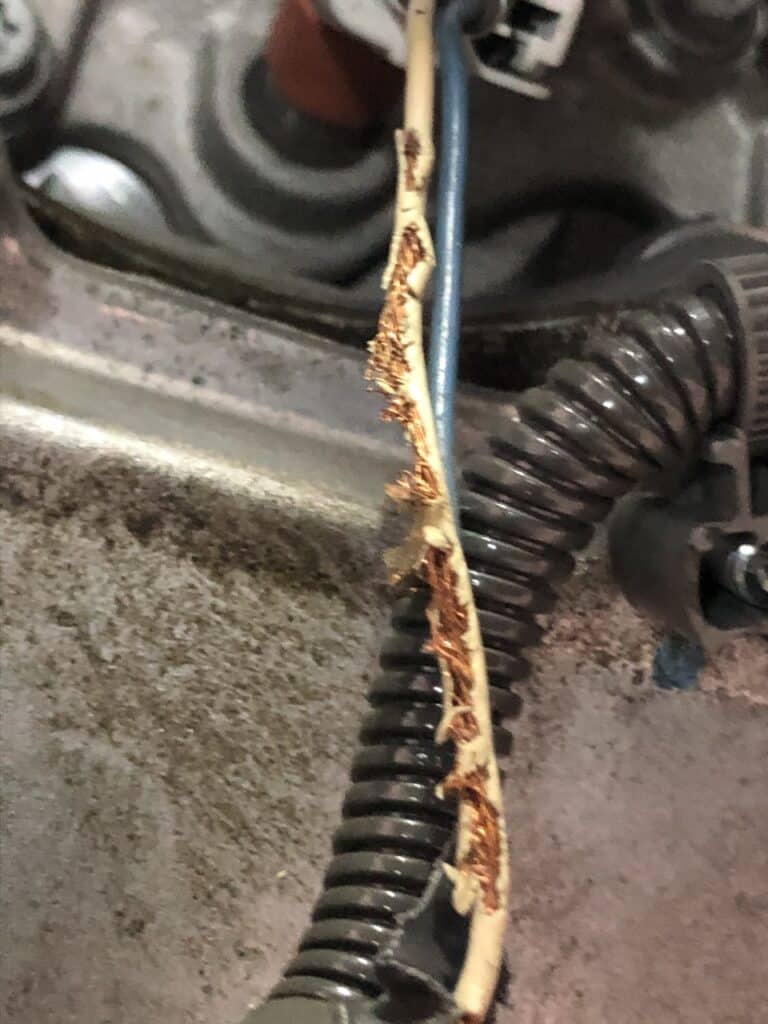
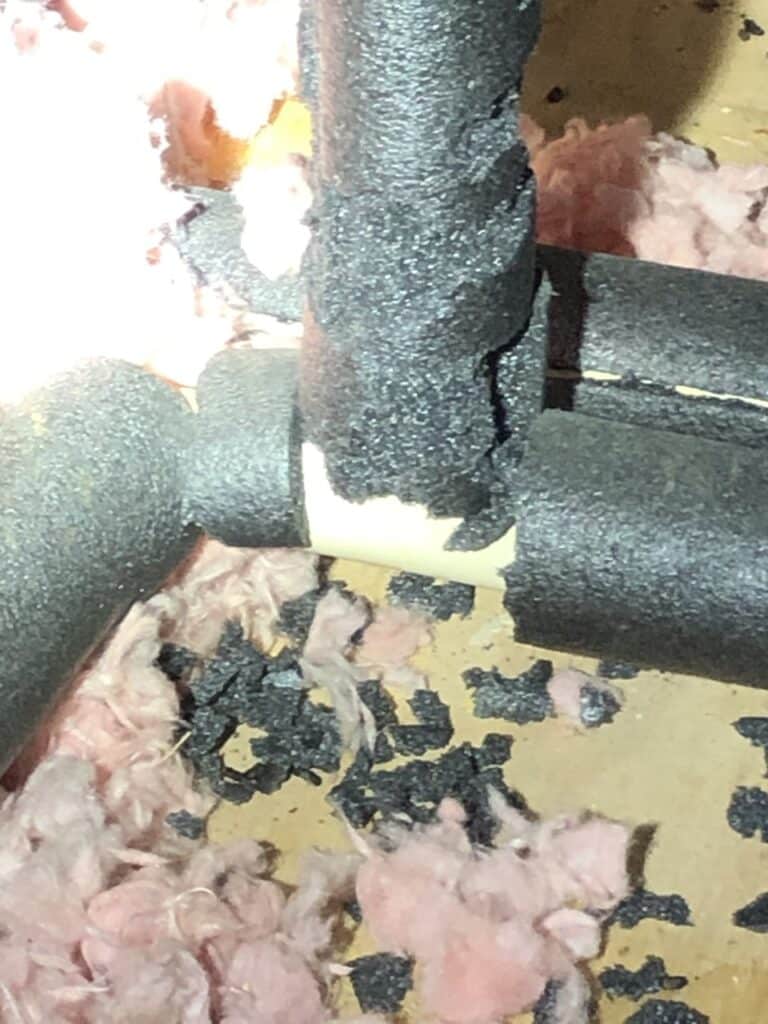
Home Inspection for Rodents
During a rodent inspection, our inspector will thoroughly inspect your attic as well as provide a full exterior home inspection. The most common signs of rodent activity are chewing, droppings, rub marks, nesting material, and small entry points.
The most common areas to find a rodent infestation are in your attic, in the crawlspace, and inside the walls. You’re likely to find evidence of rats and mice in your kitchen as they scavenge for food.
Signs of Norway Rats in Attic

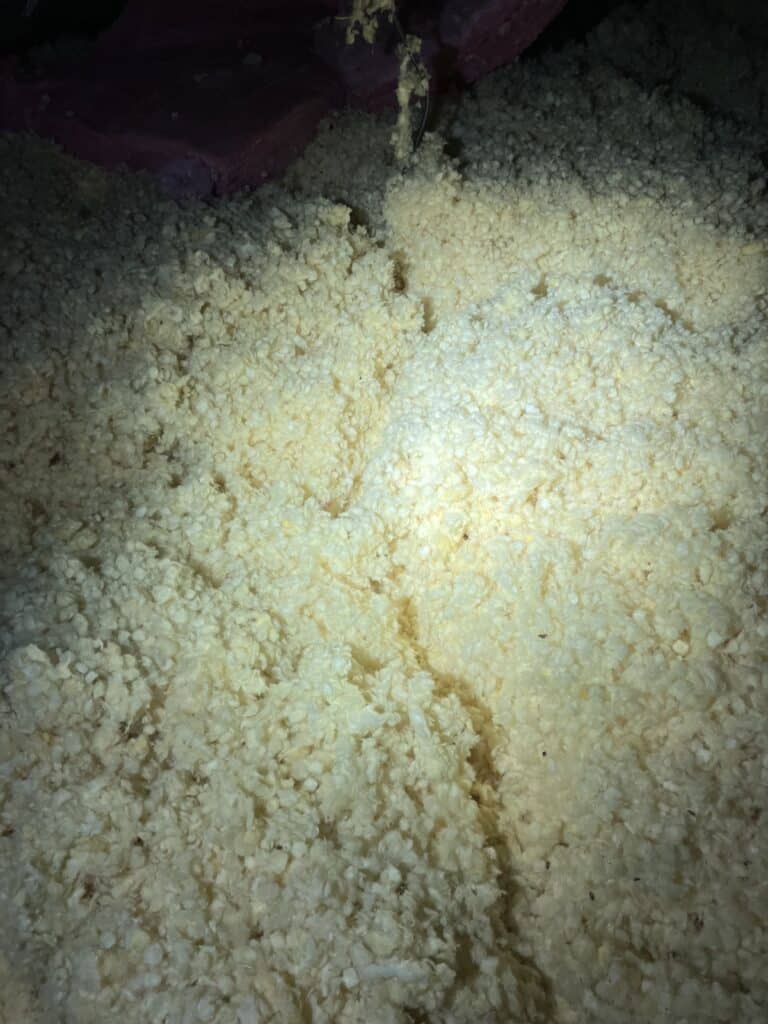
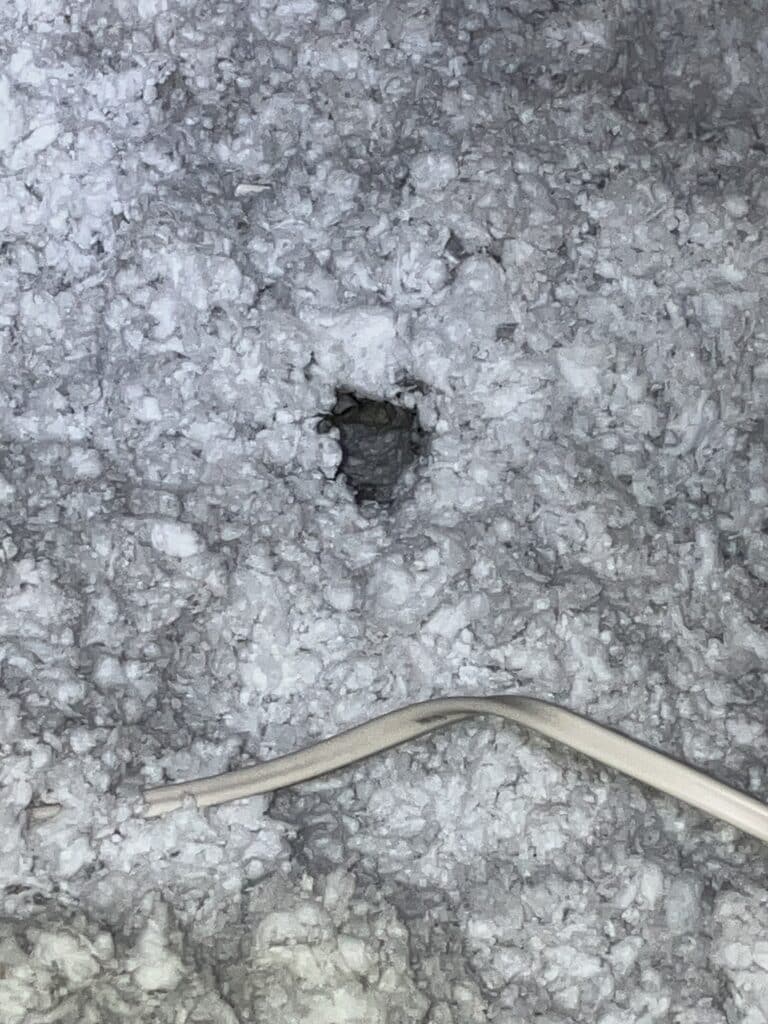
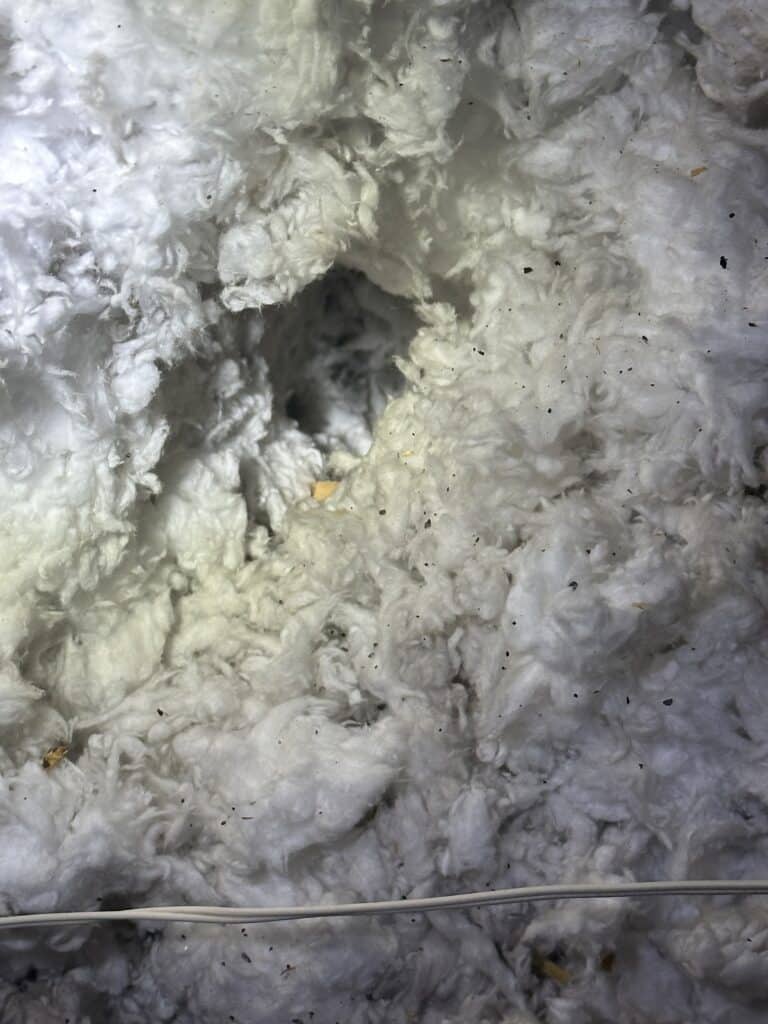
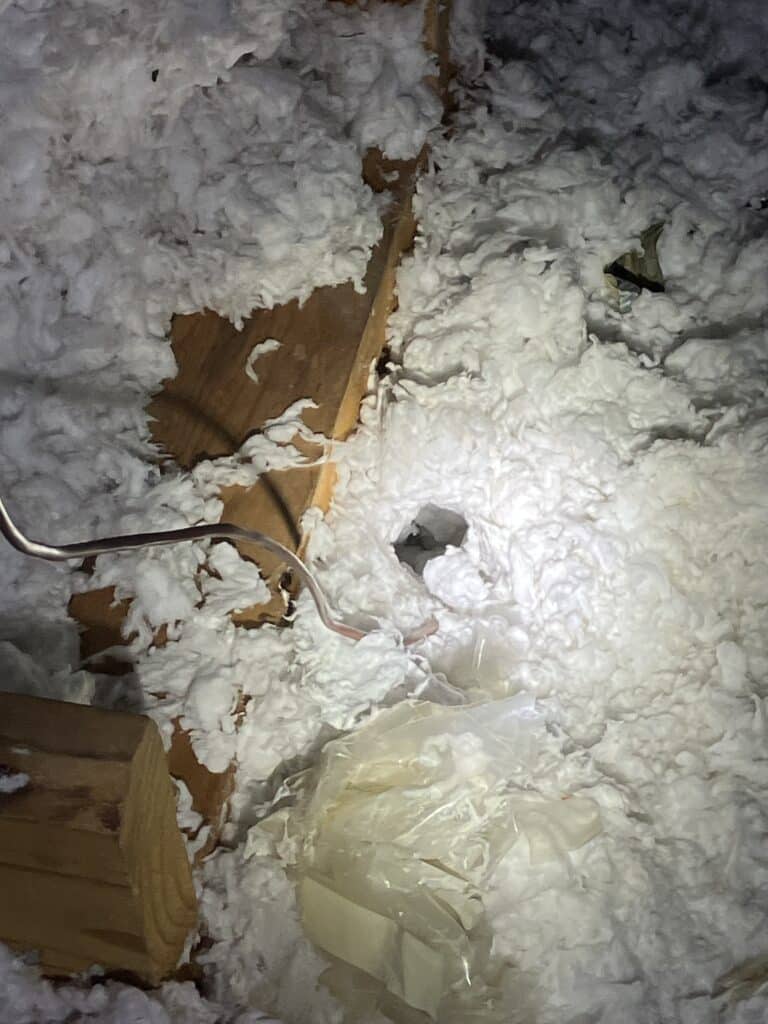
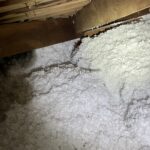
Rodent Removal & Trapping
Based on the inspection, our wildlife specialist creates a strategic trapping plan to remove the rodents found in your home. Types of traps, placement of traps, and bait used in traps determine the effectiveness of rodent trapping.
Our wildlife specialist will ensure to use of the most efficient and safe removal process for your home. Though the standard rat trapping/removal duration is normally between 5 to 14 days, the trapping process may be longer if the rodents are well-established.
Rodent Control in Your Attic
There are a few ways to rodent-proof your attic, and most of them start before the rodents reach the attic. Some rodents like mice can fit through openings as small as half an inch in diameter, which means that small holes, gaps in doorways, and wall vents often serve as common entry points.
Rats are also proficient swimmers capable of traveling through sewer lines and entering buildings by emerging from toilets and open drains.
Check your roof and soffits for any small holes. Any rodent can take a pre-existing hole and gnaw it to make it bigger. Another way rodents can get into your home is through your vents. There are a few ways you can keep rodents out of your vents.
Rodent Control for the Crawl Space
Rodents can easily find their way into your crawlspaces. Norway rats and mice are the most common rodents in crawl spaces. Norway rats tend to burrow along the foundations of homes.
Rodent Exclusion
Rodent exclusion is the best rodent control method. The rats and mice got into your home. During the Critter Control free inspection in Houston and surrounding areas, our technicians identified all current and potential animal entry points.
After rodent removal, it is essential to repair any entry points on your home. Rodents leave pheromone trails, and other rodents quickly utilize those scent trails.
Habitat Modification for Rodent Control
Food sources, water sources, and shelter attract rats, mice, and squirrels to your house. Our technicians can offer simple ways to make your property less appealing to rodents.
Keep pet food inside and stored it. Removing trees or branches close to your roof and keep your property clear of debris can help to keep your property rodent free. Rodents love clutter and will use debris for nesting material.
Keep your garage door closed as much as possible, especially at dark. Garages are often used as storage spaces, and rodents will take advantage of any food they can get to or any items that can be used for nesting.
When Will I See Rodents Most?
Rats and mice are nocturnal and active year-round in Texas. Squirrels are diurnal and most likely to enter your home during their breeding seasons.
Hurricane season is the most popular time of year for Houston rodents to venture outside of their homes. However, limiting their activity to hurricane season is not entirely true. Anytime there are large rainfalls and flooding, we should be extra cautious when it comes to rodent invasion. Flooding forces rodents to venture inside.
Pest Control vs Wildlife Removal Services
Critter Control specializes in whole-home exclusions. We identify the rodent entry points and install materials designed to keep rodents out. We offer a one year warranty on whole home exclusions and suggest recurring rodent control services to keep your home protected.
Andrew Cuen, the district manager for Critter Control of Phoenix, appeared on 12News to help educate Phoenix residents about wildlife activity.
Read the full article here.
Mothballs are insecticides intended to kill clothes moths and other fabric pests. Controlled by the Environmental Protection Agency, they are illegal to use for any purpose or by any method that isn’t specified on the label directions. This article explores if mothballs are effective wildlife deterrents for mice, snakes, bats, and other creatures, and highlights important health factors based on existing research.
History of Mothballs
Before modern air conditioning and heating systems were commonplace, households sought out natural airflow to regulate indoor temperatures, which brought with it the invasion of pests eager to eat homeowners’ favorite clothing. In response, mothballs became the first line of defense, a key element of clothing care and preservation.
With synthetic materials like nylon and polyester now blended with natural fibers like cotton, moths rarely seek out clothing as a food source. Nonetheless, there are many advertised uses for mothballs in the house and outdoor areas for wildlife control, many of which are considered dangerous or illegal.
How Mothballs Work
Mothballs are round discs of solid pesticides with the active ingredient naphthalene, camphor, paradichlorobenzene (dichlorobenzene). These solid discs release vapors that are toxic to moths and moth larvae, eliminating them or deterring them from the area. However, to be effective for pest management, mothballs must be placed in airtight containers where moths are exposed to high concentrations of vapors.
Mothballs as a Wildlife Repellent
Mothballs are frequently suggested as wildlife deterrents in both indoor and outdoor areas. These solutions are ineffective, dangerous to humans and pets, and illegal in some cases.
Indoor
Mothballs are commonly made of naphthalene or paradichlorobenzene, both of which are toxic to humans and have detrimental health effects. Accidental mothballingestion is common in children. Fumes from naphthalene mothballs can escape into the air and can cause respiratory problems. High levels of fumes can accumulate in closed areas, and improper use of mothballs can lead to long-term exposures to people and pets. Medical issues as a result of mothball naphthalene poisoning include hemolytic anemia, methemoglobinemia, and in rare cases, kidney damage.
For these reasons, mothballs should not be stored in closets, crawl spaces, attics, basements, storage chests, garment bags, or other spaces excluding airtight containers.
Outdoors
Mothballs are occasionally thrown in gardens and lawns to keep away pets and other animals. However, mothballs are ineffective in repelling wildlife in outdoor areas such as rats, mice, squirrels, bats, snakes, or other wildlife. Mothballs may contaminate soil and water and their use as animal repellants is not appropriate and can be illegal.
Do Mothballs Ward Off Snakes?
Mothballs don’t repel snakes. As snakes are attracted to areas that provide cover and shelter, homeowners should remove log or trash piles close to the home and maintain grass or other vegetation to make the area less appealing.
Will Mothballs Repel Mice & Rats?
Mothballs contain naphthalene, but the small quantity in mothballs is insufficient to effectively deter rats or mice , and the smell rapidly dissipates. The smell can be a deterrent in large enough quantities, but will not prevent rodent infestation, on top of health risks.
Bats and Mothballs
Unfortunately, there are no magical products to repel bats, including mothballs. Similar to mice, naphthalene is an annoyance to pests, but not enough to prevent the species from occupying your living space.
Groundhogs and Mothballs
Filling a groundhog hole with mothballs is not effective, and increases the chance that the groundhog will simply create another den nearby until the smell dissipates, which happens rapidly. Groundhog-proof fencing or removal services are the only effective, guaranteed solutions.
Mothballs, Chipmunks and Squirrels
While chipmunks and squirrels dislike the smell of mothballs, mothballs are a less effective option relative to trapping and removal services. Mothballs are considered an inhumane alternative as chipmunks and squirrels may die after consuming. Lastly, the use of mothballs to deter chipmunks and squirrels may be illegal depending on your locality and is bad for the environment.
Do Repellents Work?
Natural repellents like predator urine, citrus ammonia, and mothballs have low effectiveness as deterrents.
Instead of using ineffective mothball solutions to deter mice or other wildlife species, contact Critter Control technicians who can tailor permanent solutions for your wildlife problem. Mothballs are ineffective deterrents of wildlife, and most importantly pose health risks to the inhabitants of a home.
